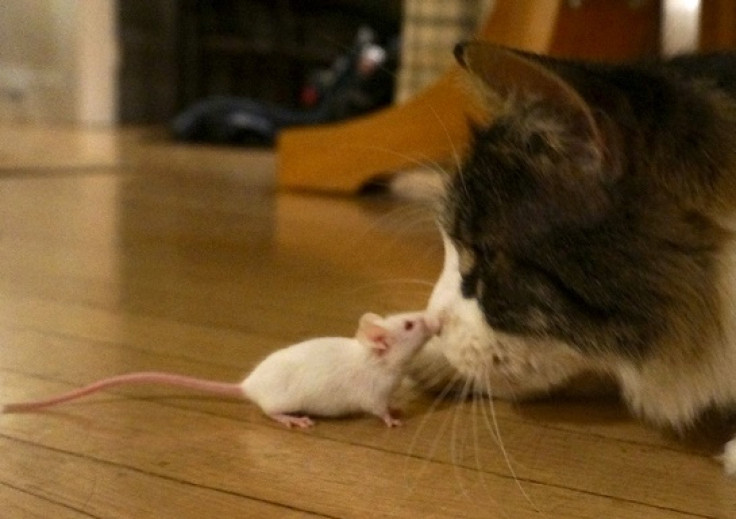'Cat Lady' Parasite Toxoplasma Gondii Makes Mice Foolishly Bold Shortly After Infection: Study

That parasite that you might be getting from your cats, Toxoplasma gondii, makes mice foolishly bold shortly after infecting the little critters, according to a new study.
T. gondii is a fan of feline hosts. Though the parasite can infect most mammals, including humans (possibly affecting behavior and psychiatric disorders, often referred to as ‘crazy cat lady syndrome’), it needs to make its way back to a feline intestine to settle down and start a family. Scientists have long known that mice infected with T. gondii seem to lack the instinctual aversion toward the scent of cat urine that rodents normally possess. Win-win for the cat and the parasite; not so much for the mouse. What scientists don’t quite know is exactly how T. gondii manipulates its host.
Previous studies have mulled the possibility that T. gondii infection affects the mouse brain after a sustained infection by inducing brain inflammation. Others suggest that cysts in the brain created by T. gondii could affect dopamine production or directly interfere with neurons. Some scientists have even reported seeing more T. gondii cysts in areas of brain regions linked to innate fear. But a new study from University of California, Berkeley biologist Wendy Ingram and colleagues published in the journal PLoS ONE finds evidence that the parasite moves more quickly -- and in more mysterious -- ways.
Their study “shows that it has less to do with where the parasite is and how long it’s there, and more to do with something the parasite is doing early on in the infection,” Ingram said in a phone interview.
Ingram and colleagues placed mice in enclosures with a dish of either bobcat or rabbit urine affixed to one end. Some mice were infected with a strain of T. gondii specially engineered to not cause chronic infections. The researchers then tracked the mice movements around the cage to see how much the avoided the dish of urine.
They found that mice infected with the less virulent strain of the parasite still avoided the dish of cat urine “at times post infection when neither parasite nor ongoing brain inflammation were detectable,” the authors wrote. “This suggests that T. gondii-mediated interruption of mouse innate aversion toward cat urine may occur during early acute infection in a permanent manner, not requiring persistence of parasite cysts or continuing brain inflammation.”
This finding suggests there may be some other mechanism behind the parasite’s ability to create bold little mice. Other researchers have shown that T. gondii can deliver little packages of proteins into cells that it doesn’t bother to invade; could those proteins hold the key to manipulating its rodent host?
“We believe that a new noncyst-centric model of T. gondii-mediated behavior manipulation of the mouse intermediate host is warranted,” Ingram and her colleagues wrote.
SOURCE: Ingram et al. “Mice Infected with Low-Virulence Strains of Toxoplasma gondii Lose Their Innate Aversion to Cat Urine, Even after Extensive Parasite Clearance.” PLoS ONE published online 18 September 2013.
© Copyright IBTimes 2024. All rights reserved.











